Wireless Waffle recently spotted that boat trips to see Radio Caroline's ship, the Ross Revenge, were available to book from their web-site (follow the link) and so it seemed like the perfect opportunity to don an anorak and set sail. On the day of the visit, the weather was beautiful, sunny, 26C and the sea was calm, but it isn't always like that. Boarding the Razorbill 3 , the tender which takes you from the jetty at West Mersea out to the Ross Revenge, it was a pleasure to see so many families taking advantage of the weather to go crabbing. The ride out took about 25 minutes and was a delight in itself with the cool sea air rushing past.
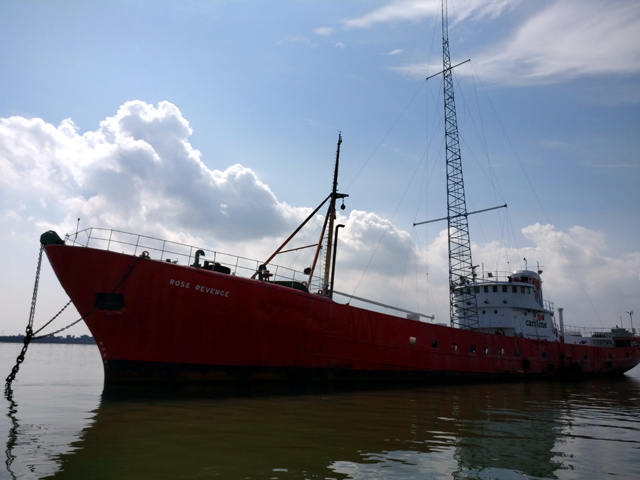 Pulling alongside the boat, it looked exactly as it does in all the postcards, though the current mast is a lot smaller than the 100 metre mast that was in use for transmission during Radio Caroline's heyday. Arrival onto the boat was greeted by a cup of tea and a fig roll in the mess and a description of the history of the boat, which turns out to have been a prize Grimsby-based fishing boat originally made as an Icelandic ice-breaker. Much of the tour of the boat is about the Ross Revenge itself, as well as the catastrophic events of October 1987 which saw the original mast collapse in a storm.
Pulling alongside the boat, it looked exactly as it does in all the postcards, though the current mast is a lot smaller than the 100 metre mast that was in use for transmission during Radio Caroline's heyday. Arrival onto the boat was greeted by a cup of tea and a fig roll in the mess and a description of the history of the boat, which turns out to have been a prize Grimsby-based fishing boat originally made as an Icelandic ice-breaker. Much of the tour of the boat is about the Ross Revenge itself, as well as the catastrophic events of October 1987 which saw the original mast collapse in a storm.
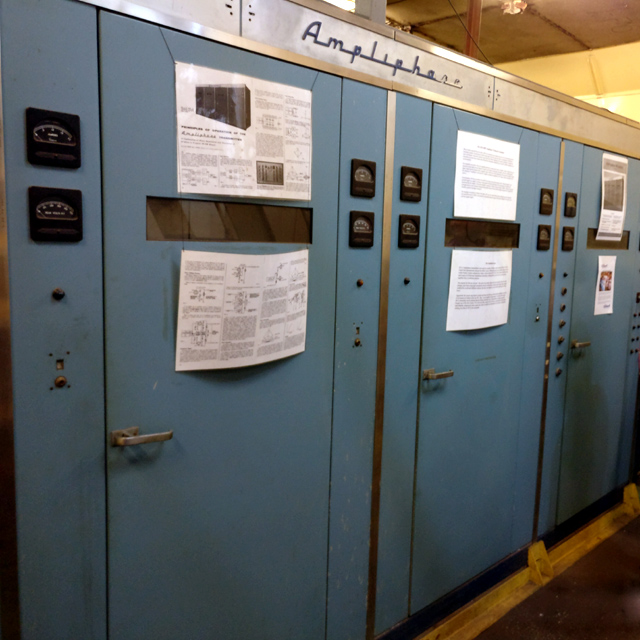 Of course no tour of such an historic ship would be complete without a visit to the studios and the technical facilities such as the engine room, generator room and of course the transmitter room. The 50 kW 'Ampliphase' transmitter consumed nearly 1 tonne of fuel per day to operate so it's no wonder that getting supplies to the boat, including diesel and fresh water, were so critical.
Of course no tour of such an historic ship would be complete without a visit to the studios and the technical facilities such as the engine room, generator room and of course the transmitter room. The 50 kW 'Ampliphase' transmitter consumed nearly 1 tonne of fuel per day to operate so it's no wonder that getting supplies to the boat, including diesel and fresh water, were so critical.
Though the notion of being a pirate at sea may seem romantic, it is clear that the lives of the DJs and other staff must, at times, have been pretty miserable. The cabins below the deck are relatively spartan and if it was blowing a gale, there couldn't have been much to do if you weren't on air.
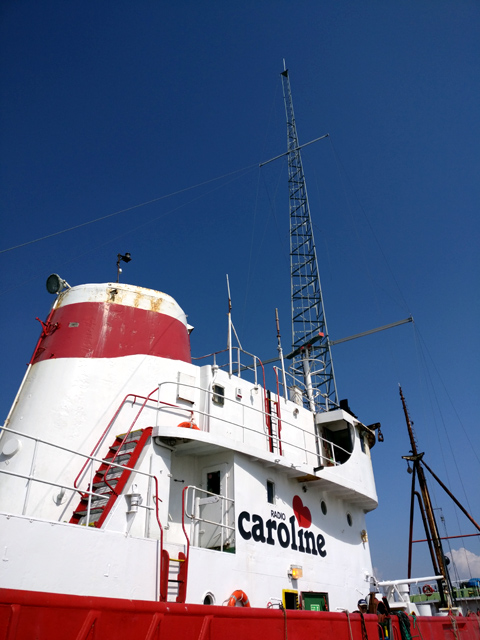 The return from the ship to the shore was equally exhilarating and you left with a lot of respect for those who took to the seas to try and deliver a radio service that filled the gap left by the legal, land-based services.
The return from the ship to the shore was equally exhilarating and you left with a lot of respect for those who took to the seas to try and deliver a radio service that filled the gap left by the legal, land-based services.
The tour comes with the Wireless Waffle 'big thumbs up' seal of approval, and is highly recommended. Obviously the weather can not be guaranteed, but an interesting and enlightening day-out is assured.
Recently, Radio Caroline has been awarded a licence by Ofcom to operate a 1 kW medium wave service on the old BBC World Service channel of 648 kHz. Whether the station can hold its own in today's crowded, on-line, market remains to be seen, but there will no doubt be a few anoraks tuning in for old time's sake. And maybe they can re-capture the spirit of those halcyon days without needing sea sick buckets.
 Pulling alongside the boat, it looked exactly as it does in all the postcards, though the current mast is a lot smaller than the 100 metre mast that was in use for transmission during Radio Caroline's heyday. Arrival onto the boat was greeted by a cup of tea and a fig roll in the mess and a description of the history of the boat, which turns out to have been a prize Grimsby-based fishing boat originally made as an Icelandic ice-breaker. Much of the tour of the boat is about the Ross Revenge itself, as well as the catastrophic events of October 1987 which saw the original mast collapse in a storm.
Pulling alongside the boat, it looked exactly as it does in all the postcards, though the current mast is a lot smaller than the 100 metre mast that was in use for transmission during Radio Caroline's heyday. Arrival onto the boat was greeted by a cup of tea and a fig roll in the mess and a description of the history of the boat, which turns out to have been a prize Grimsby-based fishing boat originally made as an Icelandic ice-breaker. Much of the tour of the boat is about the Ross Revenge itself, as well as the catastrophic events of October 1987 which saw the original mast collapse in a storm.  Of course no tour of such an historic ship would be complete without a visit to the studios and the technical facilities such as the engine room, generator room and of course the transmitter room. The 50 kW 'Ampliphase' transmitter consumed nearly 1 tonne of fuel per day to operate so it's no wonder that getting supplies to the boat, including diesel and fresh water, were so critical.
Of course no tour of such an historic ship would be complete without a visit to the studios and the technical facilities such as the engine room, generator room and of course the transmitter room. The 50 kW 'Ampliphase' transmitter consumed nearly 1 tonne of fuel per day to operate so it's no wonder that getting supplies to the boat, including diesel and fresh water, were so critical.Though the notion of being a pirate at sea may seem romantic, it is clear that the lives of the DJs and other staff must, at times, have been pretty miserable. The cabins below the deck are relatively spartan and if it was blowing a gale, there couldn't have been much to do if you weren't on air.
 The return from the ship to the shore was equally exhilarating and you left with a lot of respect for those who took to the seas to try and deliver a radio service that filled the gap left by the legal, land-based services.
The return from the ship to the shore was equally exhilarating and you left with a lot of respect for those who took to the seas to try and deliver a radio service that filled the gap left by the legal, land-based services.The tour comes with the Wireless Waffle 'big thumbs up' seal of approval, and is highly recommended. Obviously the weather can not be guaranteed, but an interesting and enlightening day-out is assured.
Recently, Radio Caroline has been awarded a licence by Ofcom to operate a 1 kW medium wave service on the old BBC World Service channel of 648 kHz. Whether the station can hold its own in today's crowded, on-line, market remains to be seen, but there will no doubt be a few anoraks tuning in for old time's sake. And maybe they can re-capture the spirit of those halcyon days without needing sea sick buckets.
add comment
( 553 views )
| permalink
| 



 ( 3 / 9029 )
( 3 / 9029 )




 ( 3 / 9029 )
( 3 / 9029 )
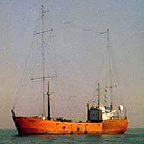 As a child, the medium wave band was a mysterious place replete with strong international broadcasters such as Radio Sweden International, Radio Moscow and the BBC, and who could forget the thrill of tuning into the medium wave pirates of the past, whether it was Radio Caroline in the 1960s, the land based pirates such as Radio Jackie in the 1970s, or Laser 558 in the 1980s. Being something of a radio back-water these days, the medium wave band is not something that Wireless Waffle has paid much attention to. So on a recent night-time road-trip where there was little else to do, the journey was shortened by the unforgiving task of working the way along the medium wave dial to see what was there these days.
As a child, the medium wave band was a mysterious place replete with strong international broadcasters such as Radio Sweden International, Radio Moscow and the BBC, and who could forget the thrill of tuning into the medium wave pirates of the past, whether it was Radio Caroline in the 1960s, the land based pirates such as Radio Jackie in the 1970s, or Laser 558 in the 1980s. Being something of a radio back-water these days, the medium wave band is not something that Wireless Waffle has paid much attention to. So on a recent night-time road-trip where there was little else to do, the journey was shortened by the unforgiving task of working the way along the medium wave dial to see what was there these days.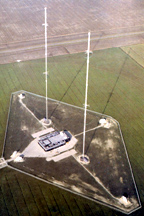 It is evident that the UK still has a prestigious number of medium wave stations, though many are geared towards older listeners (whose hearing is no doubt so frequency constrained that the limited bandwidth of AM sounds just as clear as FM) and whose service area is relatively limited due to the lower powers used (most UK local AM stations have transmitter powers around 500 Watts). At night, however, is when the band comes alive and stations from all over Europe (and even further afield) become audible. Tuning around at night reveals one key fact: Spain appears to be the king of the medium wave band. On almost any clear frequency, it is the Spanish radio stations that seem to dominate. Germany has now ceased medium wave broadcasting, and there are a diminishing number of stations in France and the Netherlands (even stalwart Radio 538 on 891 kHz recently closed down just a couple of weeks ago on 26 October).
It is evident that the UK still has a prestigious number of medium wave stations, though many are geared towards older listeners (whose hearing is no doubt so frequency constrained that the limited bandwidth of AM sounds just as clear as FM) and whose service area is relatively limited due to the lower powers used (most UK local AM stations have transmitter powers around 500 Watts). At night, however, is when the band comes alive and stations from all over Europe (and even further afield) become audible. Tuning around at night reveals one key fact: Spain appears to be the king of the medium wave band. On almost any clear frequency, it is the Spanish radio stations that seem to dominate. Germany has now ceased medium wave broadcasting, and there are a diminishing number of stations in France and the Netherlands (even stalwart Radio 538 on 891 kHz recently closed down just a couple of weeks ago on 26 October). Of course, when driving it's difficult to simultaneously look up what stations are on a particular frequency (unless you have a willing passenger) so any interesting stations and frequencies have to be committed to memory for later research. One such station and frequency that sprang up was I Am Radio on 1350 kHz. At the time of listening, it was playing almost non-stop obscure disco tracks with occasional announcements and news (from NPR) in English and the odd announcement in Italian. It is the Italian language announcements that give a clue as to the station's provenance, and a bit of web-searching later revealed that the station is 'semi-pirate'. Exactly what this means is not clear but it seems to suggest that it is not a totally legitimate organisation.
 The signal on 1350 kHz is surprisingly strong, given the stated night-time transmitter power of just 1 kW (though there are rumours of an increase to 50 kW being due). And as the frequency is almost completely clear of interference from any high power transmitters in Europe (if you exclude the 850 kW mammoth or TWR Asia in Armenia), reception is surprisingly good. If obscure disco and news from the USA is your thing, why not give it a try. They claim a contact address of 'info@iamradio.am' though the associated web-address only yields a parking page.
The signal on 1350 kHz is surprisingly strong, given the stated night-time transmitter power of just 1 kW (though there are rumours of an increase to 50 kW being due). And as the frequency is almost completely clear of interference from any high power transmitters in Europe (if you exclude the 850 kW mammoth or TWR Asia in Armenia), reception is surprisingly good. If obscure disco and news from the USA is your thing, why not give it a try. They claim a contact address of 'info@iamradio.am' though the associated web-address only yields a parking page.But coming back to the question of which European country rules the medium wave band, Wireless Waffle has conducted an analysis of the stations currently on air to find out which country uses the most frequencies and which country emits the most power into the ether, based on data from MW List.
The answers are maybe not that surprising. The top 10 European medium wave countries in terms of the numbers of frequencies used (out of the 120 possible channels from 531 to 1602 kHz inclusive) are as follows:
| Position | Country | Frequencies Used |
|---|---|---|
| 1 | Spain | 69 |
| 2 | United Kingdom | 68 |
| 3 | Romania | 26 |
| 4 | Italy | 21 |
| 5 | The Netherlands | 10 |
| 6 | Greece | 9 |
| 7= | Portugal | 8 |
| 7= | Czech Republic | 8 |
| 9 | Poland | 7 |
| 10= | Cyprus | 6 |
| 10= | Hungary | 6 |
So Spain really are medium wave royalty, if the number of frequencies in use is the measure. But what about if the total amount of power radiated into the ether is taken into account. The results look as follows:
| Position | Country | Power Emitted (kW) |
|---|---|---|
| 1 | Spain | 5190 |
| 2 | United Kingdom | 4130 |
| 3 | Romania | 3905 |
| 4 | Hungary | 2510 |
| 5 | Cyprus | 1910 |
| 6 | Czech Republic | 1150 |
| 7 | France | 1010 |
| 8 | Macedonia | 400 |
| 9 | Italy | 390 |
| 10 | Belgium | 310 |
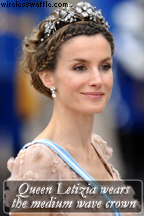 Spain retains its crown as the top medium wave transmitting country in Europe with over 5 MegaWatts of radiated power, but some surprising new countries appear lower down the top 10. Hungary jumps from joint 10th to 4th. France has only 3 medium wave frequencies in use but as one of these is the behemoth 1000 kW transmitter of TWR Europe on 1467 kHz this dwarfs many of the other countries who have a greater number of transmitters but of much lower power. Belgium has only 2 active medium wave frequencies but at 300 kW, RTBF International on 621 kHz tips the scales in their favour to bring them in at (this week's) number 10.
Spain retains its crown as the top medium wave transmitting country in Europe with over 5 MegaWatts of radiated power, but some surprising new countries appear lower down the top 10. Hungary jumps from joint 10th to 4th. France has only 3 medium wave frequencies in use but as one of these is the behemoth 1000 kW transmitter of TWR Europe on 1467 kHz this dwarfs many of the other countries who have a greater number of transmitters but of much lower power. Belgium has only 2 active medium wave frequencies but at 300 kW, RTBF International on 621 kHz tips the scales in their favour to bring them in at (this week's) number 10. 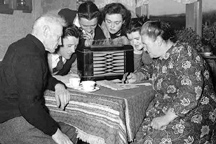 What does this tell us? Nothing in particular, and definitely nothing of any use or value, it's just a somewhat pointless academic exercise. But it does suggest that if you are a manufacturer of AM transmitters, you should undoubtedly aim to site your offices in London, Madrid and Bucharest. Or that if you are learning Spanish, you might do well to buy a medium wave radio and tune around the band at night!
What does this tell us? Nothing in particular, and definitely nothing of any use or value, it's just a somewhat pointless academic exercise. But it does suggest that if you are a manufacturer of AM transmitters, you should undoubtedly aim to site your offices in London, Madrid and Bucharest. Or that if you are learning Spanish, you might do well to buy a medium wave radio and tune around the band at night!
Information on broadcast radio stations that are actually on-air in various cities around the world is sometimes easy to get hold of, and sometimes very difficult. For many African countries, the situation is quite dynamic as stations come and go, and also many stations have no web presence (whether web-site or streaming) making verifying things very complex.
As occasional readers may be aware, the Wireless Waffle team travel to some pretty out-of-the-way places in pursuit of digging out the most important factlets regarding all matters related to radio spectrum. And with that in mind, we bring you a bandscan of the FM band in Lomé, the capital city of Togo in West Africa.
For a country where the average annual income is just US$650, there sure are a lot of radio stations on the air!
As occasional readers may be aware, the Wireless Waffle team travel to some pretty out-of-the-way places in pursuit of digging out the most important factlets regarding all matters related to radio spectrum. And with that in mind, we bring you a bandscan of the FM band in Lomé, the capital city of Togo in West Africa.
| Frequency | Station | Notes | |
|---|---|---|---|
| 89.9 | City FM | Stereo |     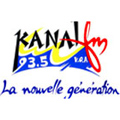 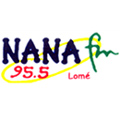 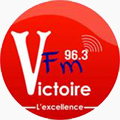  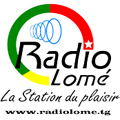 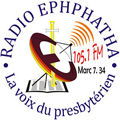 |
| 91.5 | RFI 1 Afrique | Stereo. RDS: Radio France Internat | |
| 91.9 | Sport FM | Stereo | |
| 92.3 | Zephyr | Stereo | |
| 93.1 | Taxi FM | Stereo | |
| 93.5 | Kanal FM | Stereo | |
| 94.3 | Radio Zion | Stereo | |
| 95.5 | Nana FM | Stereo. RDS: Test 123 | |
| 96.1 | Victory FM | Aflao, Ghana | |
| 96.3 | Victoire FM | Stereo | |
| 97.1 | Radio Metropolys Lome | ||
| 97.5 | BBC World Service | Stereo | |
| 97.9 | Radio Maria Togo | ||
| 98.7 | Bonne Nouvelle | ||
| 99.5 | Radio Lome | Stereo | |
| 100.7 | Radio De L'Evangile | Stereo | |
| 101.1 | Radio Horizon | ||
| 101.5 | Radio Kara | Stereo | |
| 102.7 | KNTB | ||
| 103.1 | Radio Carre Jaune | ||
| 103.9 | Frequence 1 | ||
| 105.1 | Radio Ephphata La Voix Du Presbyterien | RDS: RADIO | EPHPHATA | LA VOIX | DU | PRESBYTE | RIEN | |
| 105.5 | Sinai | Stereo. RDS: FM 105.5 | |
| 106.3 | Providence | ||
| Correct as of 30 June, 2016 | |||
Some time ago, Wireless Waffle discussed the various bidders to provide the television transmitter network for the UK's fledgling local TV stations. As part of this, the company responsible for providing the transmitters and masts for all of the other UK digital terrestrial television stations, tax evading transmitter supremos Arqiva, provided indicative figures for the costs of building the local TV transmitters. Their 'Reference Offer' details, on a site-by-site basis, the costs, as Arqiva saw them, of providing the requisite service together with the cost of providing 'network access' only (e.g. the rental of space on their masts). The figures vary by a factor of about 8 to 1 between different sites. But to what extent are Arqiva beefing up the actual costs to make a profit on their largely monopolistic position?
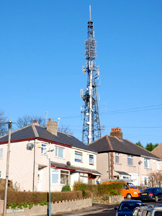 Maybe an example would be useful, so let's consider their proposals for the Sheffield transmitter, one of the cheapest in their offer. Their prices are as follows:
Maybe an example would be useful, so let's consider their proposals for the Sheffield transmitter, one of the cheapest in their offer. Their prices are as follows:
According to Ofcom's local TV feasibility study, the technical details for the Sheffield site are:
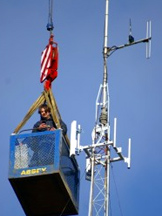 As for the annual costs, let's say it requires a visit every month to check on how it's working and this is one person dedicated for the day (though no doubt they would be checking on all the other transmitters on the site too), at a reasonable estimate of GBP 500 per day, to include the cost of petrol and transport, this equates to GBP 6000 per year. The power required for a 28 Watt transmitter assuming it is 20% efficient, is 140 Watts (equating to 1,227 kWh of electricity per year) which at today's prices would cost around GBP 122 per year. Allowing a further GBP 500 per month towards the maintenance of the buildings, air conditioning, mast and so forth (noting that these will have already been paid for by the existing tennants), the total annual fees would be around GBP 12,122. The annual fee proposed by Arqiva is therefore not as badly over-egged, no doubt the 'management fee' covers a lot of this difference.
As for the annual costs, let's say it requires a visit every month to check on how it's working and this is one person dedicated for the day (though no doubt they would be checking on all the other transmitters on the site too), at a reasonable estimate of GBP 500 per day, to include the cost of petrol and transport, this equates to GBP 6000 per year. The power required for a 28 Watt transmitter assuming it is 20% efficient, is 140 Watts (equating to 1,227 kWh of electricity per year) which at today's prices would cost around GBP 122 per year. Allowing a further GBP 500 per month towards the maintenance of the buildings, air conditioning, mast and so forth (noting that these will have already been paid for by the existing tennants), the total annual fees would be around GBP 12,122. The annual fee proposed by Arqiva is therefore not as badly over-egged, no doubt the 'management fee' covers a lot of this difference.
So, in conclusion:
The study makes the assumptions that:

Source: Assessing the technical requirements and implications of DVB-T transitions
The 'cost per transmitter' given in the report ranges from EUR 20,000 to around EUR 50,000, which seems reasonable given the assumptions made. Arqiva's estimate for re-tuning the UK's transmitter network to clear the 700 MHz band provides values ranging from GBP 310 to GBP 470 million (approximately EUR 400 to EUR 600 million) putting the price for re-farming the 700 MHz band in the UK at approximately the same level as the Commission report identifies for the whole of the EU!
There are approximately 1,200 transmitter sites in the UK, the smaller ones with three multiplexes on them and the larger 90 or so with six, seven or eight, making roughly 4,000 transmitters in the UK. Taking the consultants' report's 'per transmitter' value, the price for re-farming the spectrum in the UK ought to be nearer to EUR 80 to 200 million, a factor of 2 to 8 times removed from the prices quoted by Arqiva, depending on which end of the ranges quoted you take.
So who is right? It seems that the two reports are doing something slightly different: Perhaps Ofcom should take a leaf from the Commission's book, and instead of trying to re-engineer the UK's DTT network to be the same, should instead take the opportunity to convert the network to be DVB-T2 only and save a lot of money in the process. Given the timetable for the clearance of the 700 MHz band (e.g. around 2020), and that typical television replacement cycles are 7 years, the average British household would already have a T2 receiver by then... Then again, no doubt Arqiva could find some 'management costs' to soak up any savings!
Perhaps Ofcom should take a leaf from the Commission's book, and instead of trying to re-engineer the UK's DTT network to be the same, should instead take the opportunity to convert the network to be DVB-T2 only and save a lot of money in the process. Given the timetable for the clearance of the 700 MHz band (e.g. around 2020), and that typical television replacement cycles are 7 years, the average British household would already have a T2 receiver by then... Then again, no doubt Arqiva could find some 'management costs' to soak up any savings!
 Maybe an example would be useful, so let's consider their proposals for the Sheffield transmitter, one of the cheapest in their offer. Their prices are as follows:
Maybe an example would be useful, so let's consider their proposals for the Sheffield transmitter, one of the cheapest in their offer. Their prices are as follows:- GBP 147,397 one-off costs, and;
- an annual fee of GBP 17,783.
According to Ofcom's local TV feasibility study, the technical details for the Sheffield site are:
- Frequency: Television Channel 55, vertically polarised
- Transmitter power: 100 Watts e.r.p. requiring a transmitter output power of 28 Watts (taking into account antenna gain and cable loss)
- Antenna height: 43 metres
- Antenna type: 2 x log periodic on a bearing of 110 degrees
 As for the annual costs, let's say it requires a visit every month to check on how it's working and this is one person dedicated for the day (though no doubt they would be checking on all the other transmitters on the site too), at a reasonable estimate of GBP 500 per day, to include the cost of petrol and transport, this equates to GBP 6000 per year. The power required for a 28 Watt transmitter assuming it is 20% efficient, is 140 Watts (equating to 1,227 kWh of electricity per year) which at today's prices would cost around GBP 122 per year. Allowing a further GBP 500 per month towards the maintenance of the buildings, air conditioning, mast and so forth (noting that these will have already been paid for by the existing tennants), the total annual fees would be around GBP 12,122. The annual fee proposed by Arqiva is therefore not as badly over-egged, no doubt the 'management fee' covers a lot of this difference.
As for the annual costs, let's say it requires a visit every month to check on how it's working and this is one person dedicated for the day (though no doubt they would be checking on all the other transmitters on the site too), at a reasonable estimate of GBP 500 per day, to include the cost of petrol and transport, this equates to GBP 6000 per year. The power required for a 28 Watt transmitter assuming it is 20% efficient, is 140 Watts (equating to 1,227 kWh of electricity per year) which at today's prices would cost around GBP 122 per year. Allowing a further GBP 500 per month towards the maintenance of the buildings, air conditioning, mast and so forth (noting that these will have already been paid for by the existing tennants), the total annual fees would be around GBP 12,122. The annual fee proposed by Arqiva is therefore not as badly over-egged, no doubt the 'management fee' covers a lot of this difference.So, in conclusion:
- Arqiva seem to have extensively overpriced the capital work associated with providing and installing the local TV transmitter; but
- The proposed annual fee seems much more reasonable.
The study makes the assumptions that:
- Existing antennas are broadband and can be re-used;
- Existing transmitters will be upgraded rather than replaced.

Source: Assessing the technical requirements and implications of DVB-T transitions
The 'cost per transmitter' given in the report ranges from EUR 20,000 to around EUR 50,000, which seems reasonable given the assumptions made. Arqiva's estimate for re-tuning the UK's transmitter network to clear the 700 MHz band provides values ranging from GBP 310 to GBP 470 million (approximately EUR 400 to EUR 600 million) putting the price for re-farming the 700 MHz band in the UK at approximately the same level as the Commission report identifies for the whole of the EU!
There are approximately 1,200 transmitter sites in the UK, the smaller ones with three multiplexes on them and the larger 90 or so with six, seven or eight, making roughly 4,000 transmitters in the UK. Taking the consultants' report's 'per transmitter' value, the price for re-farming the spectrum in the UK ought to be nearer to EUR 80 to 200 million, a factor of 2 to 8 times removed from the prices quoted by Arqiva, depending on which end of the ranges quoted you take.
So who is right? It seems that the two reports are doing something slightly different:
- The Commission's report assumes that existing multiplexes and frequencies are converted to DVB-T2 and as such fewer are needed. In only very few cases would there therefore need to be a change in frequency, as the additional capacity of T2 (and MPEG-4) would mean existing frequencies could largely be re-used.
- The Arqiva report is trying to move all existing multiplexes (whether DVB-T or DVB-T2) to new frequencies, which is (clearly!) a much more expensive undertaking.
 Perhaps Ofcom should take a leaf from the Commission's book, and instead of trying to re-engineer the UK's DTT network to be the same, should instead take the opportunity to convert the network to be DVB-T2 only and save a lot of money in the process. Given the timetable for the clearance of the 700 MHz band (e.g. around 2020), and that typical television replacement cycles are 7 years, the average British household would already have a T2 receiver by then... Then again, no doubt Arqiva could find some 'management costs' to soak up any savings!
Perhaps Ofcom should take a leaf from the Commission's book, and instead of trying to re-engineer the UK's DTT network to be the same, should instead take the opportunity to convert the network to be DVB-T2 only and save a lot of money in the process. Given the timetable for the clearance of the 700 MHz band (e.g. around 2020), and that typical television replacement cycles are 7 years, the average British household would already have a T2 receiver by then... Then again, no doubt Arqiva could find some 'management costs' to soak up any savings!
